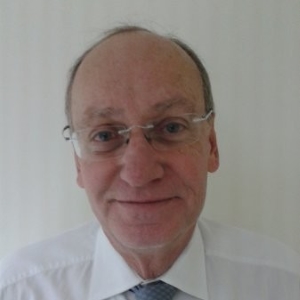Airbus Defence and Space (formerly Cassidian) - Experts & Thought Leaders
Latest Airbus Defence and Space (formerly Cassidian) news & announcements
Airbus Defence and Space and Omnitronics have signed a Memorandum of Understanding (MoU), at the Comms Connect conference and expo in Melbourne, to explore collaboration in the development of interoperable critical communication gateways to facilitate the transition from narrowband to broadband for end users. Airbus Defence and Space offers mission-critical communication and collaboration solutions which combine traditional narrowband (professional mobile radios including over TETRA networks) and next-generation broadband (4G/5G) technologies. They are designed to support public safety organisations and critical infrastructure operators that require reliable and secure communication capabilities. Meanwhile, Omnitronics brings extensive experience and capabilities in radio dispatch management systems, communications management, Radio over IP and interoperability solutions across radio infrastructures for mission-critical agencies and enterprises worldwide. Airbus’ broadband communication platform Under the MoU, the two parties will jointly investigate the feasibility of developing gateways that facilitate interoperability between Agnet, Airbus’ broadband communication platform, and Airbus TETRA with narrowband critical communication standards such as P25 and Digital Mobile Radios (DMR), and Omnitronics’ radio dispatch management systems. This collaboration aims to create seamless integration and enhanced communication capabilities for mission-critical environments. With interoperable gateways, it will be easier for end users to migrate from narrowband to broadband in the field. Airbus’ robust platforms with Omnitronics Alain Ruinet, Head of APAC for Public Safety and Security at Airbus Defence and Space, said: “This collaboration represents a strategic step in enhancing interoperability between different communication systems, a vital factor in mission-critical operations. By combining Airbus’ robust platforms with Omnitronics’ proven technology and expertise, we aim to deliver flexible and reliable solutions tailored to the evolving needs of our customers.” John Jordan, CEO at Omnitronics, added: “Partnering with Airbus allows us to extend our capabilities and contribute to next-generation critical communication systems. Together, we will explore innovative ways to improve operational efficiency and safety across multiple sectors.”
Airbus Defence and Space has signed a Memorandum of Understanding (MoU) with Cluster 2 at the Paris Air Show to deliver next-generation digital solutions that enhance airport efficiency, security and collaboration across Saudi Arabia. The ceremony was attended by H.E. Abdulaziz Al-Duailej, President of the General Authority of Civil Aviation (GACA), Wouter Van Wersch, Executive Vice President of Airbus International, Gabriel Semelas, President of Airbus in Middle-East and Africa, and Mr. Saad A. Alajlan, General Manager of Commercial Operations and Business Development at Cluster 2. The partnership will introduce advanced technologies including Agnet Turnaround by Airbus , a smart platform that enables real time coordination of airport operations. Improve situational awareness Through this MoU, Airbus and Cluster 2 aim to raise operational standards This will empower Cluster 2 to streamline workflows, enhance on-time performance and elevate the passenger experience across its network of 22 international and domestic airports. Through this MoU, Airbus and Cluster 2 aim to raise operational standards, improve situational awareness and drive seamless collaboration between ground staff, security teams and control rooms. Agnet Turnaround “This partnership underscores our commitment to driving digital innovation in aviation. With Agnet Turnaround, we are enabling smarter, safer and more connected airports that align with the Kingdom’s vision for the future of transportation,” said Antoun Farra, Managing Director of Airbus Defence and Space in Saudi Arabia. “Airports are vital gateways to the Kingdom, and digital transformation is at the heart of our strategy. Partnering with Airbus allows us to enhance safety, reduce response times and create a unified operations ecosystem across our airports,” commented Eng. Badr Al-Dalami, Chief Executive Officer of Cluster 2. With multiple communication and automation capabilities, Agnet Turnaround is a smart and secure solution that aims at solving daily operational challenges for aviation stakeholders and enhancing On Time Performance (OTP).
2022 Airbus helped ensure the safe hosting of the FIFA World Cup 2022 as the communication technology partner of the global sporting event which took place in Qatar. Airbus deployed its mission-critical communication and collaboration solutions for use by security, public safety, and emergency personnel assigned to different key points and areas in, and around the stadiums and the metro. Multimedia-enriched features The resilient Tetra network, the Tactilon Dabat terminals, as well as more than 20,000 reliable radios, and Tactilon Agnet were used to secure various areas, and guarantee the safety of the international football teams and spectators. Security personnel and first responders, including 5,000 policemen, benefitted from the technologies’ multimedia-enriched features such as video and text, and voice messaging as well as emergency calls and location tracking. Mission-critical solutions In any mega events such as the World Cup, collaboration is key in the area of security and safety" “In any mega events such as the World Cup, collaboration is key in the area of security and safety. Our mission-critical solutions helped connect the first responders during the football tournament, giving them the possibility to carry out their jobs efficiently." "Airbus is delighted to have contributed to Qatar’s efforts to guarantee everyone’s safety, from the footballers, to fans and spectators, as well as those who work behind the scenes,” said Selim Bouri, Vice-president for Airbus Secure Land Communications in Africa, Asia, and the Middle East, explained. “We were fully aware of the great lengths that went to security and safety planning and training, and to be picked as the sporting spectacle’s communication technology partner was an honour and a proud moment for us,” Bouri added.
Insights & Opinions from thought leaders at Airbus Defence and Space (formerly Cassidian)
Unrealistic promises by over-enthused marketers and under-delivery by R&D departments have damaged the cause of video analytics almost since its inception. For me, the exaggeration reached its worst point when industry pundits suggested that we would soon be able to identify and alert on anomalous behaviour of the kind demonstrated by the Tsarnaev brothers in the moments before the 2013 Boston Marathon Bombings. Mainstream journalists speculated that the two Chechen brothers might have stood out in a crowd because they were wearing … err … baseball caps. Irresponsible claims are widespread in the analytics field, and real technological advances will only come about when product developers engage with institutions who are conducting research with academic rigour. A cynic might be forgiven for believing that, with the exception of capturing license plate numbers, CCTV needs human beings to monitor it, period. The reality is more subtle: as Algernon notes in The Importance of Being Earnest: “the truth is rarely pure and never simple.” Cardiff University collaboration with Airbus Defence and Space SourceSecurity.com spoke to David Marshall, Professor of Computer Vision at Cardiff University, about his own research, collaboration with applied clinical researchers and the current work of doctoral students. Prof Marshall acknowledges that his current modeling is in essence a research project, but Cardiff University has reached out to industry by collaborating with Airbus Defence and Space on programs with commercial potential. Flocking birds model The background to the analytics algorithms being developed at Cardiff is remarkably broad: Marshall is working with a psychologist (Prof Simon Moore, also of Cardiff University), and one of the starting points has been the simulation of drunken behaviour based on models of flocking birds. He explains: “My colleague Simon was keen to bring standard modelling patterns for group movements of birds and even shoals of fish to bear on research into how crowds of people flow around obstacles at times when many of them may be under the influence of alcohol. Drunkenness immediately introduces an element of randomness to what would otherwise be a tendency to form regular and natural lines.” Personal space as a simple two-dimensional radius "The aim is to learn about the warning signs for a potential confrontation, and the algorithm looks for unusual behavioural traits" He continues: “The other thing we modelled was personal space as a simple two-dimensional radius. Drunk people are less sensitive to occupation of space: they don’t demand a larger radius around them though they are more likely to encroach on what others will consider their own personal space. But get too close to somebody under the influence, and they will tend to lash out. Under normal conditions, people rarely bump into each other, though, of course, if you add alcohol to the mix then collisions become frequent. We wanted to validate our models with real data and obtained surveillance camera streams from police forces in South Wales. We’re also active in police science social research here at Cardiff.” As with any experimentation of this kind, there was separation of controlled groups; in this case footage of violent incidents compared with normal behaviour. The aim is to learn about the warning signs for a potential confrontation, and the algorithm looks for unusual behavioural traits. Night-time illumination with low contrast is always a challenge, and camera resolution varies. Picture quality, even from local councils with limited budgets, is improving rapidly, but street lighting levels are likely to remain the same.” The university is sceptical as to how much the improved resolution from megapixel cameras will help its work. “High resolution will not necessarily help us with peoples’ heads and torsos moving around in a seething crowd. The nature of the data remains challenging.” So is Prof Marshall willing to use the adjective ‘intelligent’ of the scene analysis here, this being a crucial distinction for many analytics providers in the commercial sector? Artificial intelligence machinery and techniques “We’re certainly using recognised artificial intelligence machinery and techniques for our classifications. We’ve looked at what features can be used to describe the data so we can get discrimination, and then train a standard classifier. But problems with occlusion [obscuring of objects] mean we treat the crowd as a texture flow. When violence erupts, the texture of the crowd changes and otherwise unified movement becomes random and high-frequency.” Video analytics - A tool for assessing social behaviour "We’re never going to accommodate all the eccentricities of human behaviour, but the goal is to develop systems that can alert operators in control centres" Arguments from those who are skeptical about video analytics as a tool for assessing social behaviour in public spaces can be overwhelming. Early algorithms for street observation proved incapable of distinguishing between the movement involved with somebody taking off their coat and somebody attacking the person next to them. Similarly, for artificial intelligence, greeting a friend with a hug can resemble trying to throttle them. Prof Marshall remains optimistic about the potential. “A hug is lower frequency in movement than a scuffle and will only occur once! Yes. We do of course get some false positives when people use their arms to gesticulate during an animated but non-violent argument. ” Evaluating footage of crowd dynamics He continues: “We’re never going to accommodate all the eccentricities of human behaviour, but the goal is to develop systems that can alert operators in control centres if violence may be brewing while accepting a small rate of false positives. The quicker camera control centres can detect a threat, then the quicker police officers and first-responders can be on the scene. We really want to procure substantial video streams that we can study for flashpoints and incidents as they develop rather than footage that has been taken once a situation has unfolded.” If researchers in computer vision can be given more opportunities to evaluate real rather than simulated footage of crowd dynamics then video analytics may begin to live up to what until now has been seen by many as a series of false dawns.
One system, one card
DownloadAligning physical and cyber defence for total protection
DownloadUnderstanding AI-powered video analytics
DownloadEnhancing physical access control using a self-service model
DownloadHow to implement a physical security strategy with privacy in mind
Download

































